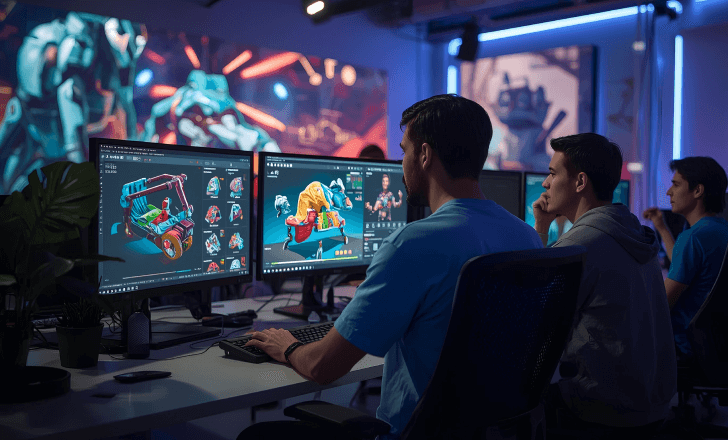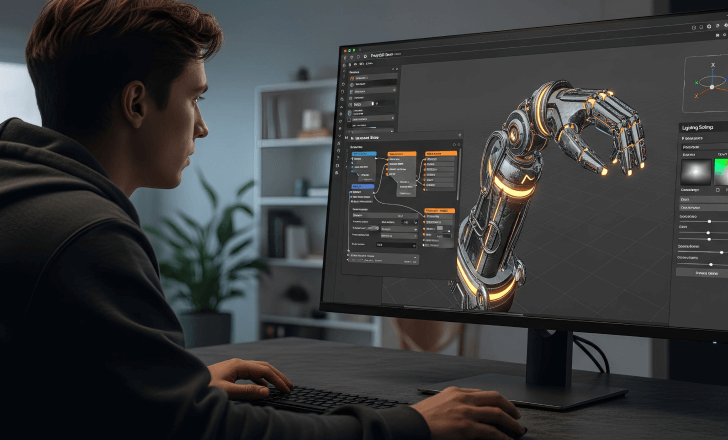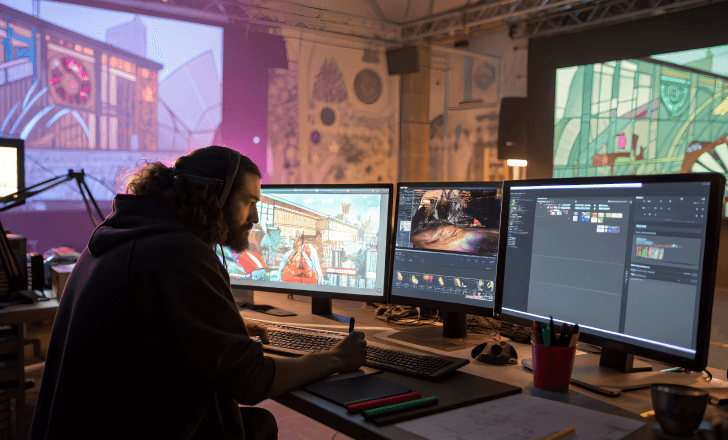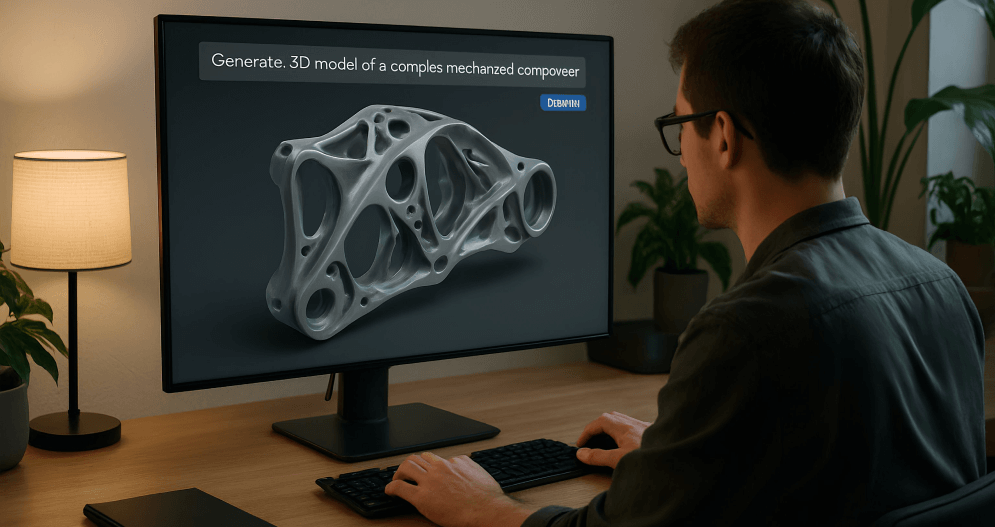Artificial intelligence is transforming 3D modeling, making it easier than ever to bring ideas to life. With tools like RealityMAX, creators can now get 3D model AI outputs from a simple text prompt or even a single image, skipping traditional modeling steps. This technology is redefining how game developers, designers, and digital creators produce visual content.
What does “get 3D model AI” really mean?
When we say “get 3D model AI,” we’re talking about generating 3D models automatically using artificial intelligence. Instead of manually sculpting, texturing, and rigging, users can input a text description or upload reference images. The AI interprets those prompts and generates a base 3D mesh complete with PBR materials and textures.
RealityMAX’s Image to 3D and ReIMAGINE AI features are examples of this next-generation workflow, letting users create detailed assets without traditional modeling.
How does AI generate 3D models from text or a single image?
AI 3D model generators use neural networks trained on extensive libraries of 3D data. When you type a text prompt like “a medieval wooden table with metal legs” or upload a photo, the system interprets shapes, materials, and proportions to generate a mesh that matches your input.
These models come with industry-standard formats that integrate seamlessly with game engines such as Unreal Engine or Unity. RealityMAX users can export, edit, and visualize their generated models directly in the browser.
Why game developers are embracing AI 3D model generators
For game developers, speed and consistency are everything. AI allows teams to generate 3D models at scale, reducing production times dramatically. By using text-to-3D workflows, studios can quickly prototype environments, characters, or props, then fine-tune them through manual editing.
RealityMAX supports real-time collaboration, enabling developers, artists, and clients to view and comment on generated models from anywhere. That means no more exchanging heavy files or waiting for renders, everything happens in the cloud.

Can AI 3D models reach game-ready quality?
Yes, and it’s improving every day. AI-generated 3D models are no longer just rough concepts, they’re game-ready. With tools like RealityMAX, creators can add PBR textures, fix mesh issues, and export in multiple file formats. The platform also supports pivot points, animations, and manual adjustments to refine every detail.
AI doesn’t eliminate creativity; it amplifies it. Artists maintain full control while the AI handles repetitive or technical steps like UV unwrapping or material generation.
What are the benefits of using AI instead of traditional modeling?
Traditional 3D modeling methods are time-consuming and require specialized skills. AI offers a quick and easy way to go from concept to creation, even if you’re not an expert. It speeds up workflows by:
- Transforming simple text descriptions into realistic 3D models.
- Turning reference photos into textured meshes.
- Reducing manual modeling and texturing work.
- Allowing faster iteration with real-time feedback.
This approach helps professionals focus on style and storytelling rather than technical setup.
How do you edit and customize AI-generated models?
Once the AI has generated a model, users can refine it with manual editing tools. In RealityMAX, creators can adjust scale, lighting, textures, and background directly inside the platform. The ReIMAGINE AI module even lets you modify details through natural language, updating colors, materials, or ambiance using short text prompts.

Which file formats and tools are supported?
RealityMAX supports industry-standard file formats for smooth integration with other tools. Generated models can be exported to formats compatible with Unreal Engine, Blender, or Maya, allowing teams to continue refining or animating their work.
Additionally, the platform’s AI texture generator applies PBR materials for realistic surfaces. That makes it ideal not only for games but also for animation, e-commerce, and digital marketing.
What if the generated model needs fixing?
AI-generated assets sometimes require small adjustments. That’s why platforms like RealityMAX include built-in mesh fixing and texturing options. Users can fix mesh issues, correct pivot points, or retouch materials directly in the workspace. The process feels like working with a professional modeling suite, but simplified and faster.
Can AI-generated 3D models be used for videos or animation?
Absolutely. Once you get a 3D model via AI, you can animate it, integrate it into a video scene, or render it in real time. Many creators use RealityMAX to create videos, walkthroughs, or interactive product previews. The platform’s AR and web viewer also lets audiences interact with models on any device.
How does AI 3D modeling enhance creativity?
AI expands what’s possible for creators. By automating technical tasks, it allows artists to explore more concepts and test new styles. Whether generating props for a game, designing furniture, or visualizing architectural spaces, AI shortens the path from idea to visualization.
RealityMAX users can even use uploaded images or text box prompts to inspire new designs instantly, a huge leap forward compared to traditional modeling workflows.

Is it possible to collaborate on AI 3D model projects?
Yes. Seamless collaboration is one of the key strengths of cloud-based tools like RealityMAX. Teams can comment, edit, and share models in real time without local files. This simplifies teamwork for game developers, designers, and marketing agencies working remotely or across time zones.
Why choose RealityMAX to get 3D model AI outputs?
RealityMAX combines accessibility with professional power. It’s completely web-based, meaning no installation is needed. Users can generate, edit, and share models directly from their browser, making it ideal for teams or freelancers.
Key advantages include:
- AI-driven creation from text or image.
- Real-time collaboration and editing.
- AR viewing and easy embedding on websites.
- Extensive library of 3D objects and materials.
- Free plan for new users to explore AI creation.
With these tools, creators can go from concept to interactive 3D experiences faster than ever.
What’s next for AI in 3D modeling?
As AI continues to evolve, 3D modeling will become even more intuitive. Soon, creators will simply describe a concept in plain language and receive a fully rigged, styled, and textured asset ready for use.
RealityMAX is already part of that future, bridging the gap between text prompts and tangible 3D content. It’s a platform where imagination meets automation, enabling creators to focus on what really matters: bringing ideas to life.
